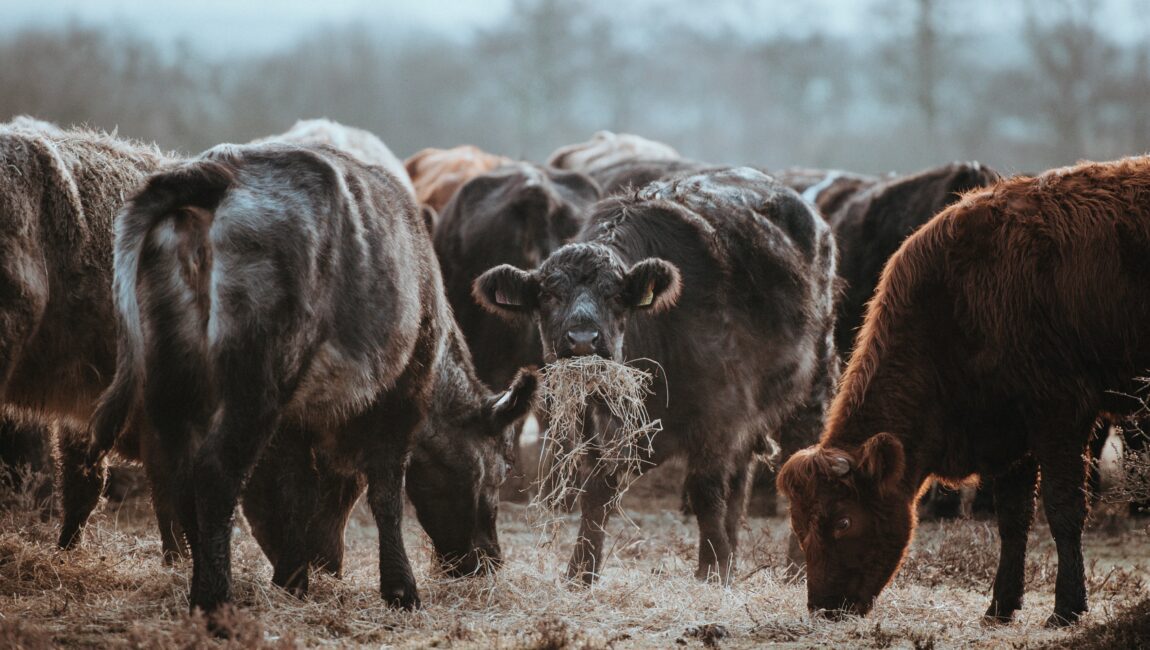
Save yourself money during the cold season by continuing to graze livestock
Fall and winter grazing isn’t limited to hot, southern states. There are multiple strategies for extending the grazing season and saving money on supplemental feed. Feed is almost always the largest cost in raising livestock, and these changes have the potential to create a noteworthy impact on your bottom line.
Stockpiling Pasture
Moving livestock away from designated pastures now can create a stockpiled pasture for them to graze later this fall when pastures become dormant. If you are able, give multiple pastures a break from grazing now to enable rotational grazing and improved forage yields later. Early August is the best time to move livestock off of these designated pastures for maximum growth potential.
Cattle should be kept on the pastures until the stubble is down to three to four inches. Once you move the livestock to a different pasture, applying 40 to 60 pounds of nitrogen fertilizer just before rainfall is expected will boost forage regrowth and accumulation, along with quality. After this, let your pastures grow and accumulate until growth dramatically slows or stops altogether.
When the cold weather arrives and forage growth ceases, you will be ready to move your livestock from their summer pastures back to the stockpiled pastures. If you were able to set multiple pastures aside for stockpiling, rotational grazing will help reduce waste and trampling damage, both of which shorten the potential grazing period.
If your livestock will be limited to one pasture, strip grazing is an alternative to rotational grazing. Utilizing temporary electric fence can create a boundary for cattle to graze a fresh area of pasture every day or every few days, applying the same concept as rotational grazing.
Grazing Stalks
Depending on the needs of your livestock and the extent of your operation, grazing stalks after fall harvest can be a good option for extending your grazing season. Specific grazing plans and need for supplemental nutrition depend on multiple factors within your livestock, including gestation and growth stages, but most fall-harvested crops can be utilized in some grazing capacity.
Corn and grain sorghum stalks provide the most protein and energy for cattle, and even soybean residue can be grazed for approximately 30 to 45 days. Grazing corn stalks can actually be a preferred option over baled stalks for cattle, as they selectively eat leaves and husks, the best parts of corn residue that also happen to be unavailable in baled stalks. Soybean residue should only be used as a supplemental feed source, as it does not independently meet the protein needs of cattle and is a less palatable option for livestock.
A couple common concerns about grazing stalks are future yield reductions in those fields and crop residue and nutrients being consumed by livestock rather than remaining in the field. In studies from the University of Nebraska, compaction from grazing has shown no reduction in corn or soybean yields following grazing of stover, both in no-till and ridge-till operations. Additionally, you don’t need to be concerned about nutrient loss, as most nutrients from the crops are returned to the soil via manure, and grazing removes less than 50% of the stover, leaving plenty of residue on the field.
Whether you are able to incorporate just one of these practices or all of them, you can expect a positive change in your input costs with no losses in livestock health or performance.
If it’s time for a new forage variety in your pastures, be sure to check out our extensive forage selection and find which option is best for you.
